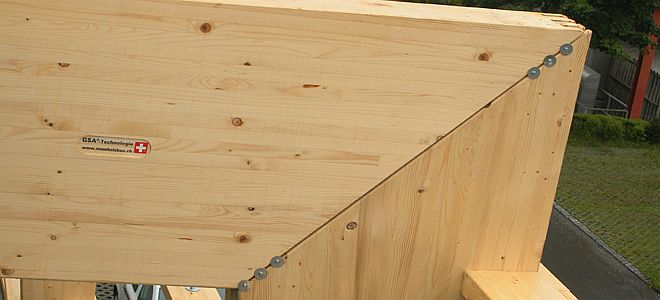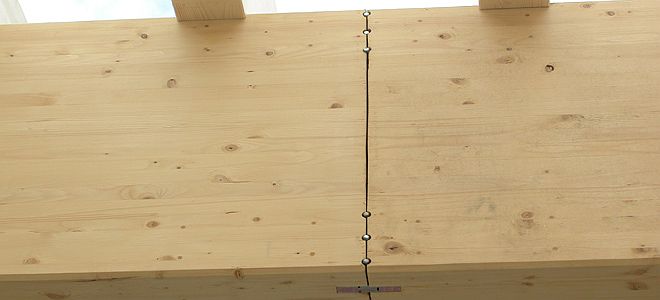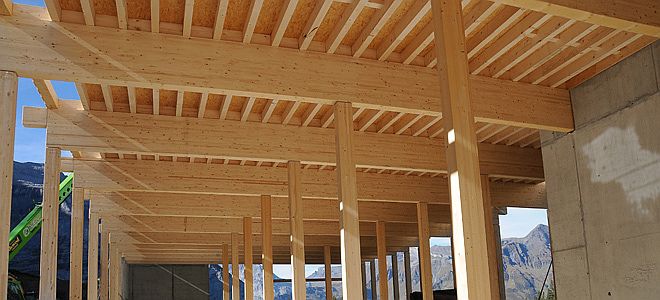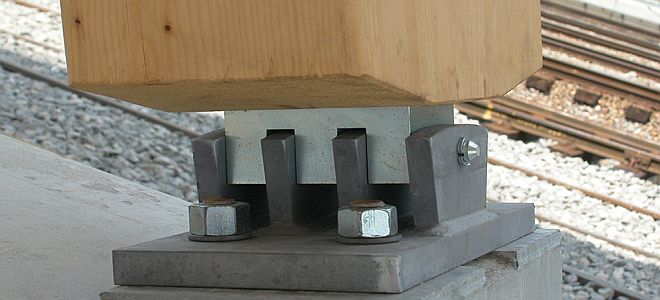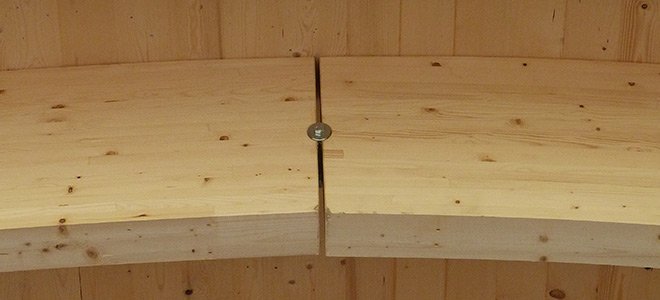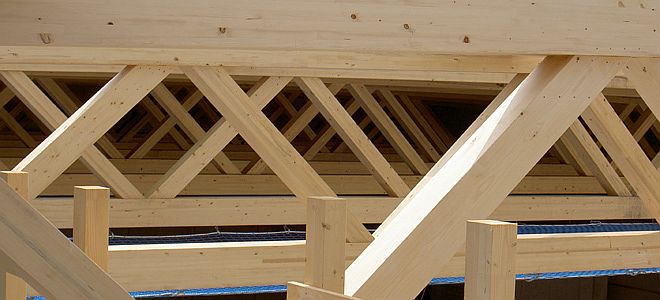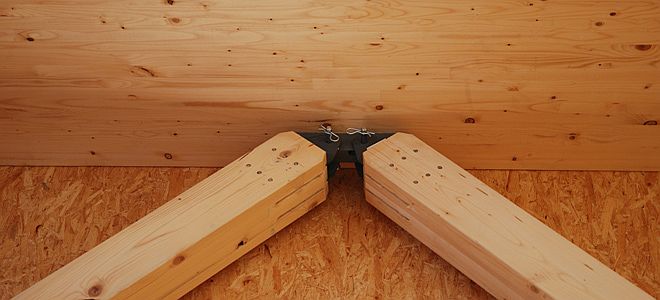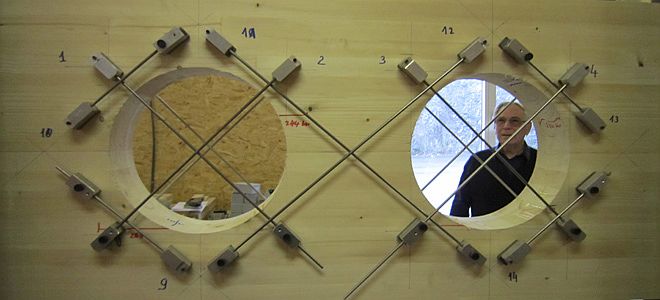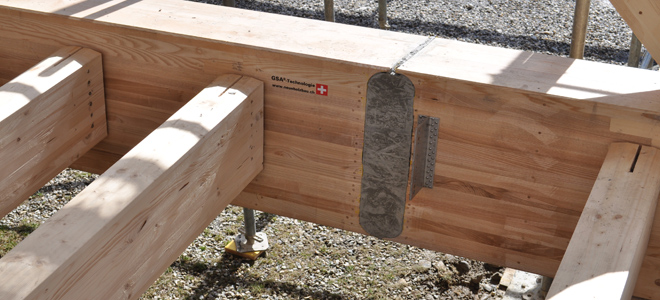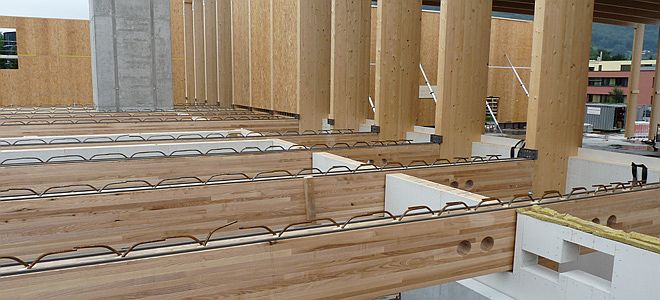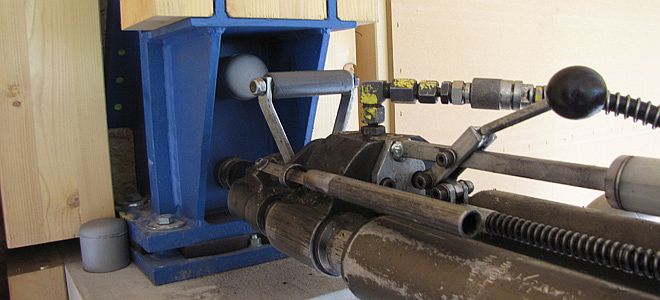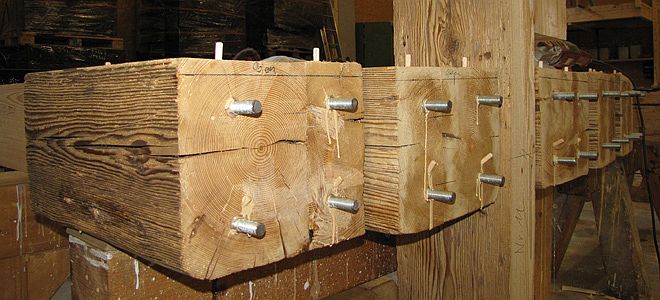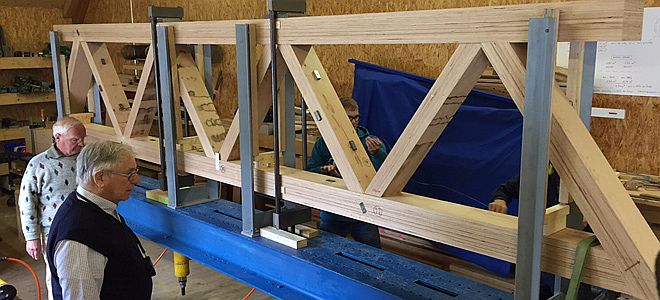
GSA-Technology
GSA-Technology is a high-performance connection technology for modern timber engineering, in which threaded steel rods are glued to Glulam and hardwood with epoxy resin. GSA-Technology was developed in-house by neue Holzbau AG in order to realise highly efficient and standardised connections for timber construction. Through many years of experience and development, GSA-Technology has become an excellent connection technology in modern timber construction.
GSA-Technology creates benefits for everyone involved:
• Constructors’ individual construction projects can be realised cost-efficiently due to GSA’s standardised elements.
• Architects are provided with a filigree and aesthetically demanding structure. Due to internal connections, the impression is left to the design.
• Carpenters benefit from efficient installation due to highest possible precision and assembly-friendly plug connections made possible by state-of-the-art CAD/CNC technology.
• Fire prevention: The connectors are protected, thereby improving fire behaviour.
Another huge advantage is our in-house testing laboratory in which we constantly advance our GSA® technology. It enables us to test static systems quickly and efficiently.
1. GSA-Technology = hogh-performance Connection system
GSA-System:
Force-and form-fitting connection for Glulam in timber Engineering
2. Engineer’s requirements = foundations for GSA-Technology
The three criteria: ductility, stiffness, load capacity are inherently guaranteed by GSA-Technology of neue Holzbau AG, Lungern. The only thing the design engineer has to take into account is the reduced efficiency η = 0.80 of the Connection.
Ductility
Guaranteed by neue Holzbau AG.
Requires good knowledge of the materials used:
- GS anchor: control fu, fy, and δ5
- GSA resin: factory testing as well as ongoing monitoring in all applications
- Base material timber: systematic (tension) control of the laminations and KZ Joints
Stiffness
With sufficient approximation: calculation using the gross values of the timber.
Load capacity
Measurement according to norm SIA 265 with reduced fd values in impact area:
η · fd with η = 0,80 (general)
Tested and patented applications systems
